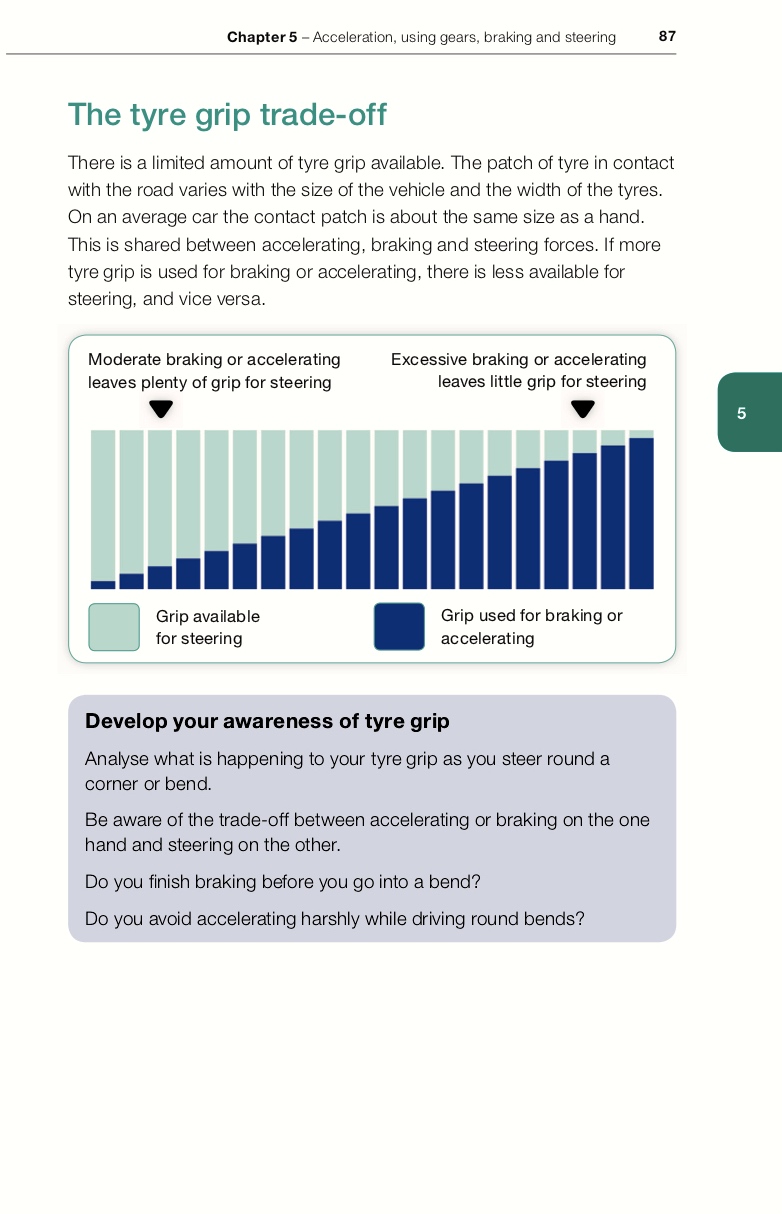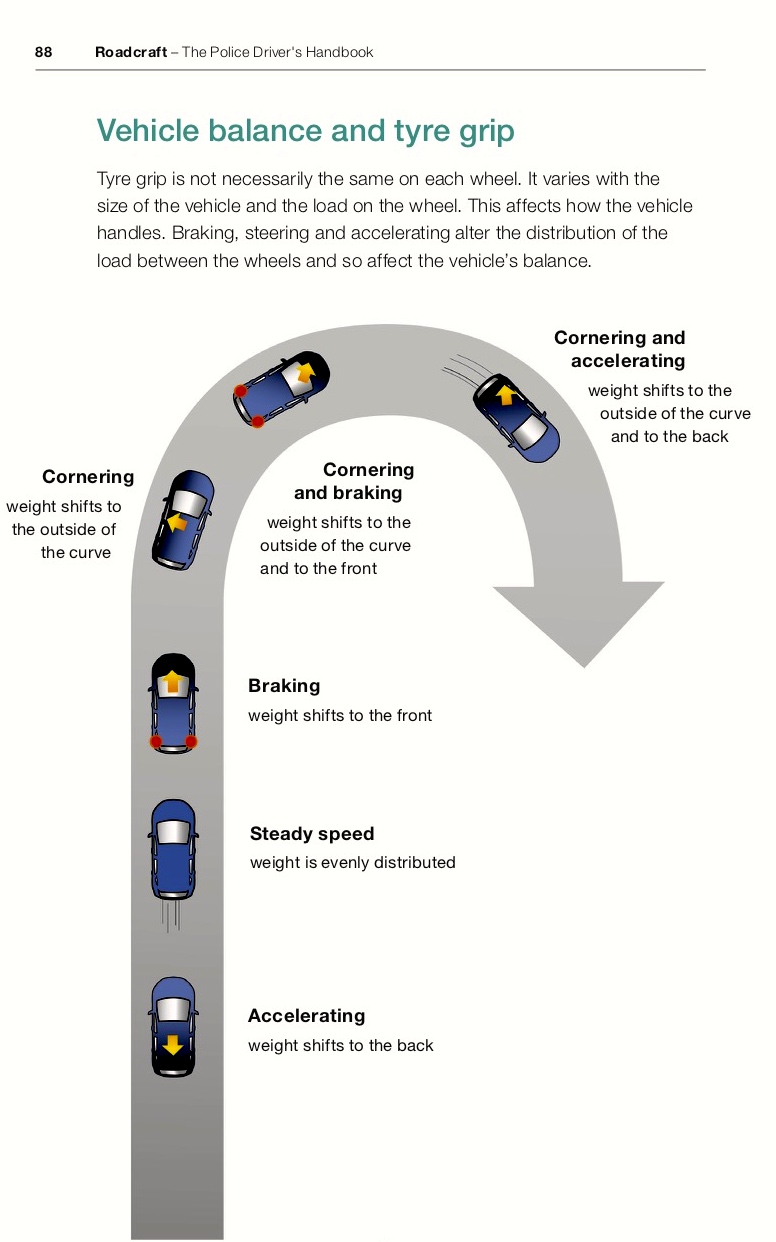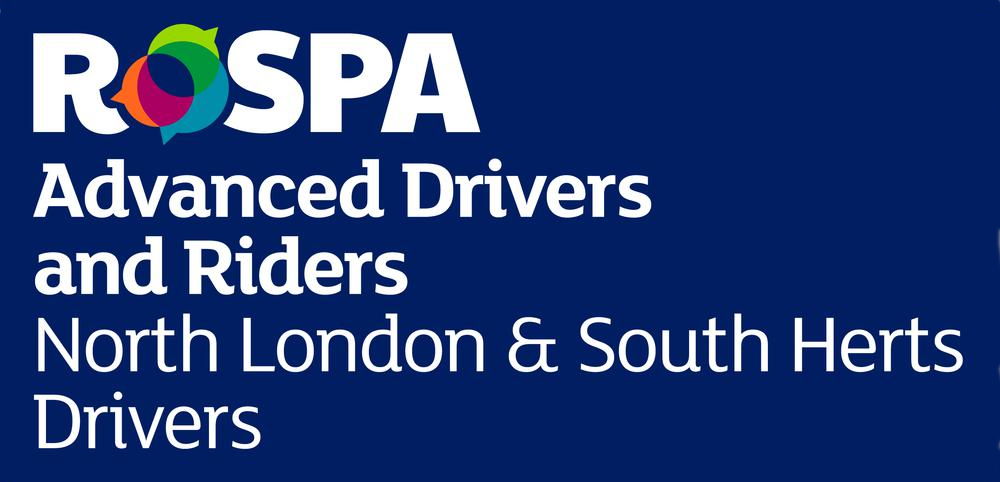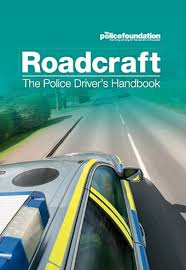Slowing Down and Stopping Chapter 5 Pages 104 - 118
You need to be able to slow down or stop smoothly and with your vehicle fully under control. Anticipate the need to slow down or stop early and brake progressively. Being able to accurately estimate the required braking distance at different speeds and in different conditions is central to skillful driving. There are two ways of slowing down (decelerating) or stopping.
-
Releasing or easing off the accelerator
-
Using the brakes
-
Releasing the accelerator - Engine Braking
When you release the accelerator , the engine slows and through engine compression exerts a slowing force on the wheels. This causes the engine to act as a brake, reducing road speed smoothly and gradually with little wear to the vehicle. Engine braking allows you to lose speed in conditions where normal braking might lock the wheels - for example, on slippery roads, It is also useful on long descents in hilly country.

-
Using the brakes
Use the brakes if you need to make more than a gradual adjustment to your road speed. For maximum control, you should keep both hands on the steering wheel while you brake and plan to avoid braking on bends and corners.
-
Remember - Brakes to Slow - Gears to Go

Check your brakes every time you use your vehicle, both before you move off and when you have the opportunity to perform a rolling brake test.
Smooth braking follows a Bell Curve shape, gently find the 'bite point' increase pressure to bring the vehicle to a virtual stop and then back off the pressure to avoid the 'neck jerk' at the end of your braking.

‘Diagrams and text from Roadcraft – The Police Rider’s Handbook, published 2013 by The Stationery Office (TSO) © Police Foundation copyright 2013. Reproduced with permission from the Police Foundation.’

